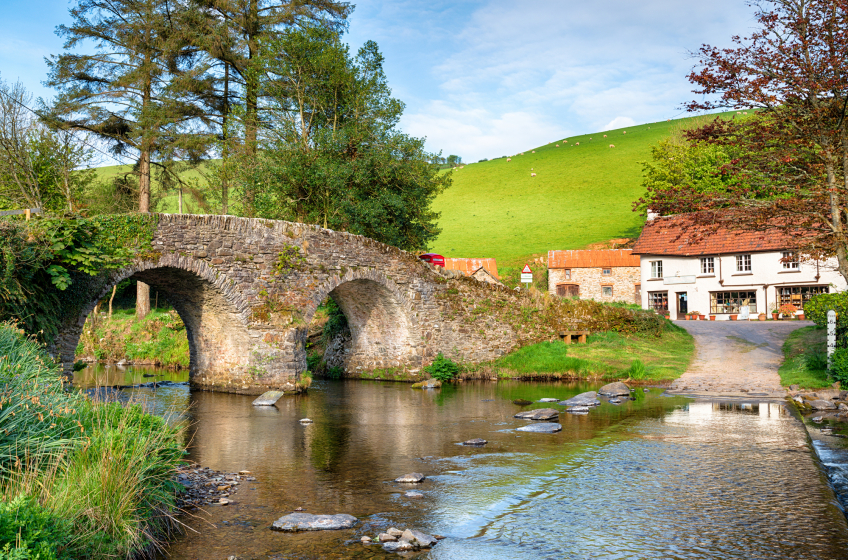An Introduction to Exmoor
a visitor's overview of the Exmoor National Park, its landscapes, villages and visitor attractions
Welcome to Exmoor, a mesmerising landscape of sprawling moorland, towering cliffs, and serene rivers, that captures the heart and imagination of its visitors. Located on the border of Somerset and Devon in Southwest England, this National Park is a diverse blend of unique environments, steeped in folklore and brimming with cultural heritage. This guide provides a snapshot of Exmoor's multifaceted appeal, designed to offer you an insight into what awaits in this stunning natural sanctuary.
Exmoor, with its 267 square miles of undulating terrain, encompasses a patchwork of habitats. It is a land of contrasts, where high cliffs plunge into the Bristol Channel, and vast moors with heather and gorse give way to deep wooded valleys and crystal-clear streams. The scenic diversity of Exmoor is its trademark, offering breath-taking vistas that ignite the senses and inspire adventure.
The geology of Exmoor is a chronicle of ancient events, with rocks dating back over 350 million years. The landforms you see today, from the high moorland plateaus to the spectacular coastal cliffs, narrate a story of a land shaped by erosion and human influence over millennia. The remarkable Valley of Rocks, with its jagged cliffs and towering rock formations, stands as a testament to the dramatic forces that shaped this terrain.
If you're a wildlife enthusiast, Exmoor is a haven of biological diversity. Its diverse habitats support a rich array of species, some of which are rare and protected. Keep an eye out for the iconic Exmoor ponies grazing in the wild, and the impressive red deer, the largest land mammal in England. The region is also home to a plethora of bird species, from skylarks and buzzards to peregrine falcons and kingfishers.
Exmoor's history is intricately woven into its landscapes, with evidence of human habitation dating back to prehistoric times. Discover the enigmatic standing stones and Bronze Age burial mounds that dot the moors, or explore the remnants of medieval farming communities, visible in the patterns of the fields. The Doone Valley, made famous by R.D. Blackmore's novel 'Lorna Doone,' is steeped in folklore and offers an enchanting walk into both nature and narrative.
An extensive network of trails makes Exmoor a paradise for walkers and cyclists. Whether you fancy a challenging trek across the high moors or a leisurely stroll along river valleys, you'll find paths that suit your pace. Tarka Trail and South West Coast Path are some of the notable trails that cut through the park, offering captivating views and a sense of tranquillity.
Nestled within the park's boundaries and scattered around its edges are charming towns and villages, where rural traditions blend with modern life. Places such as Dulverton, Lynton, Lynmouth, and Porlock each have their distinct charm, offering warm hospitality, delicious local cuisine, and a chance to explore artisan shops and historic attractions.
Accommodation in Exmoor spans from traditional inns and bed-and-breakfasts to self-catering cottages and campsites. Regardless of your preferences or budget, you'll find places to stay that offer a warm welcome and give you a sense of being part of this timeless landscape.
Bear in mind that Exmoor's climate can be unpredictable, so come prepared for all weathers. The park's location, exposed to the Atlantic, can bring rapid changes, but it's this weather that shapes the beauty of the landscape, adding to its dramatic allure.
In essence, Exmoor is more than just a destination; it's a living, breathing testament to the harmonious interaction of nature and culture. It's a place that invites you to unplug from the world and connect with nature, whether through exploring its diverse landscapes, immersing yourself in its rich history, or simply taking a moment to enjoy the peace and tranquillity. Exmoor beckons you to partake in its unfolding story, an experience that's sure to stay with you long after you leave.
Shortlist
- Your Shortlist is empty

